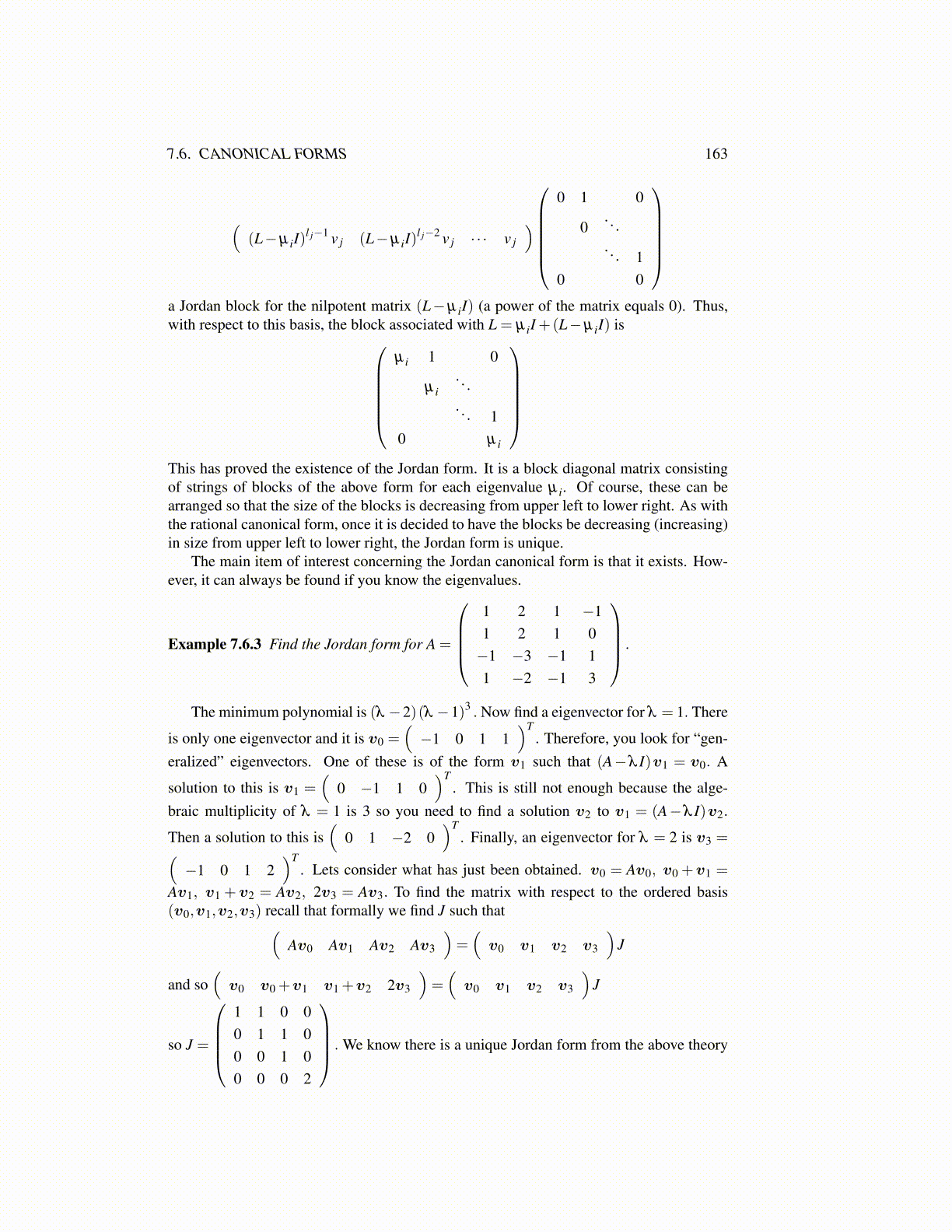
7.6. CANONICAL FORMS 163
((L−µ iI)
l j−1 v j (L−µ iI)l j−2 v j · · · v j
)
0 1 0
0. . .. . . 1
0 0
a Jordan block for the nilpotent matrix (L−µ iI) (a power of the matrix equals 0). Thus,with respect to this basis, the block associated with L = µ iI +(L−µ iI) is
µ i 1 0
µ i. . .. . . 1
0 µ i
This has proved the existence of the Jordan form. It is a block diagonal matrix consistingof strings of blocks of the above form for each eigenvalue µ i. Of course, these can bearranged so that the size of the blocks is decreasing from upper left to lower right. As withthe rational canonical form, once it is decided to have the blocks be decreasing (increasing)in size from upper left to lower right, the Jordan form is unique.
The main item of interest concerning the Jordan canonical form is that it exists. How-ever, it can always be found if you know the eigenvalues.
Example 7.6.3 Find the Jordan form for A =
1 2 1 −11 2 1 0−1 −3 −1 11 −2 −1 3
.
The minimum polynomial is (λ −2)(λ −1)3 . Now find a eigenvector for λ = 1. There
is only one eigenvector and it is v0 =(−1 0 1 1
)T. Therefore, you look for “gen-
eralized” eigenvectors. One of these is of the form v1 such that (A−λ I)v1 = v0. A
solution to this is v1 =(
0 −1 1 0)T
. This is still not enough because the alge-braic multiplicity of λ = 1 is 3 so you need to find a solution v2 to v1 = (A−λ I)v2.
Then a solution to this is(
0 1 −2 0)T
. Finally, an eigenvector for λ = 2 is v3 =(−1 0 1 2
)T. Lets consider what has just been obtained. v0 = Av0, v0 +v1 =
Av1, v1 + v2 = Av2, 2v3 = Av3. To find the matrix with respect to the ordered basis(v0,v1,v2,v3) recall that formally we find J such that(
Av0 Av1 Av2 Av3
)=(
v0 v1 v2 v3
)J
and so(
v0 v0 +v1 v1 +v2 2v3
)=(
v0 v1 v2 v3
)J
so J =
1 1 0 00 1 1 00 0 1 00 0 0 2
. We know there is a unique Jordan form from the above theory